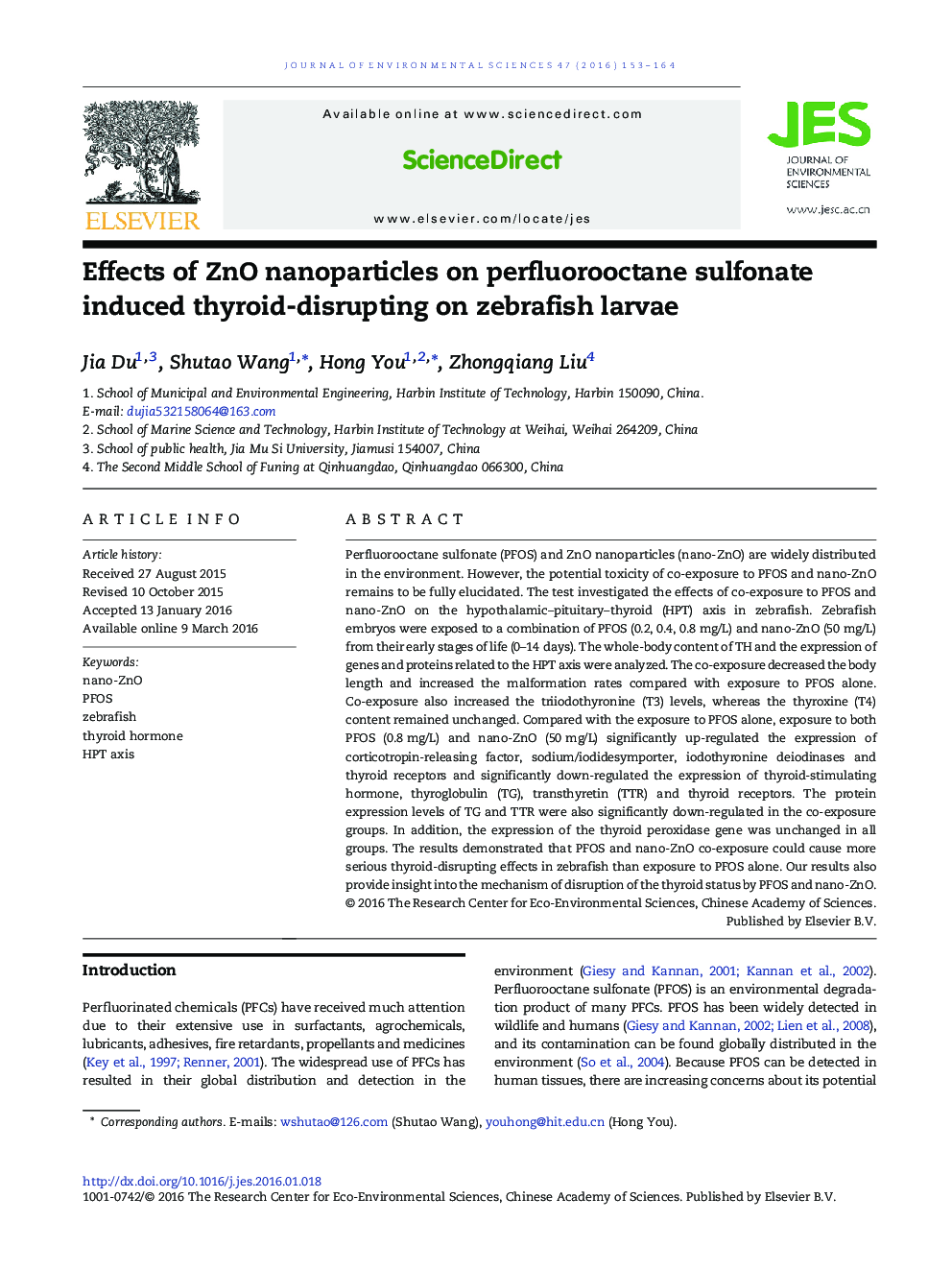| Article ID | Journal | Published Year | Pages | File Type |
|---|---|---|---|---|
| 4453610 | Journal of Environmental Sciences | 2016 | 12 Pages |
Perfluorooctane sulfonate (PFOS) and ZnO nanoparticles (nano-ZnO) are widely distributed in the environment. However, the potential toxicity of co-exposure to PFOS and nano-ZnO remains to be fully elucidated. The test investigated the effects of co-exposure to PFOS and nano-ZnO on the hypothalamic–pituitary–thyroid (HPT) axis in zebrafish. Zebrafish embryos were exposed to a combination of PFOS (0.2, 0.4, 0.8 mg/L) and nano-ZnO (50 mg/L) from their early stages of life (0–14 days). The whole-body content of TH and the expression of genes and proteins related to the HPT axis were analyzed. The co-exposure decreased the body length and increased the malformation rates compared with exposure to PFOS alone. Co-exposure also increased the triiodothyronine (T3) levels, whereas the thyroxine (T4) content remained unchanged. Compared with the exposure to PFOS alone, exposure to both PFOS (0.8 mg/L) and nano-ZnO (50 mg/L) significantly up-regulated the expression of corticotropin-releasing factor, sodium/iodidesymporter, iodothyronine deiodinases and thyroid receptors and significantly down-regulated the expression of thyroid-stimulating hormone, thyroglobulin (TG), transthyretin (TTR) and thyroid receptors. The protein expression levels of TG and TTR were also significantly down-regulated in the co-exposure groups. In addition, the expression of the thyroid peroxidase gene was unchanged in all groups. The results demonstrated that PFOS and nano-ZnO co-exposure could cause more serious thyroid-disrupting effects in zebrafish than exposure to PFOS alone. Our results also provide insight into the mechanism of disruption of the thyroid status by PFOS and nano-ZnO.
Graphical abstractFigure optionsDownload full-size imageDownload as PowerPoint slide
